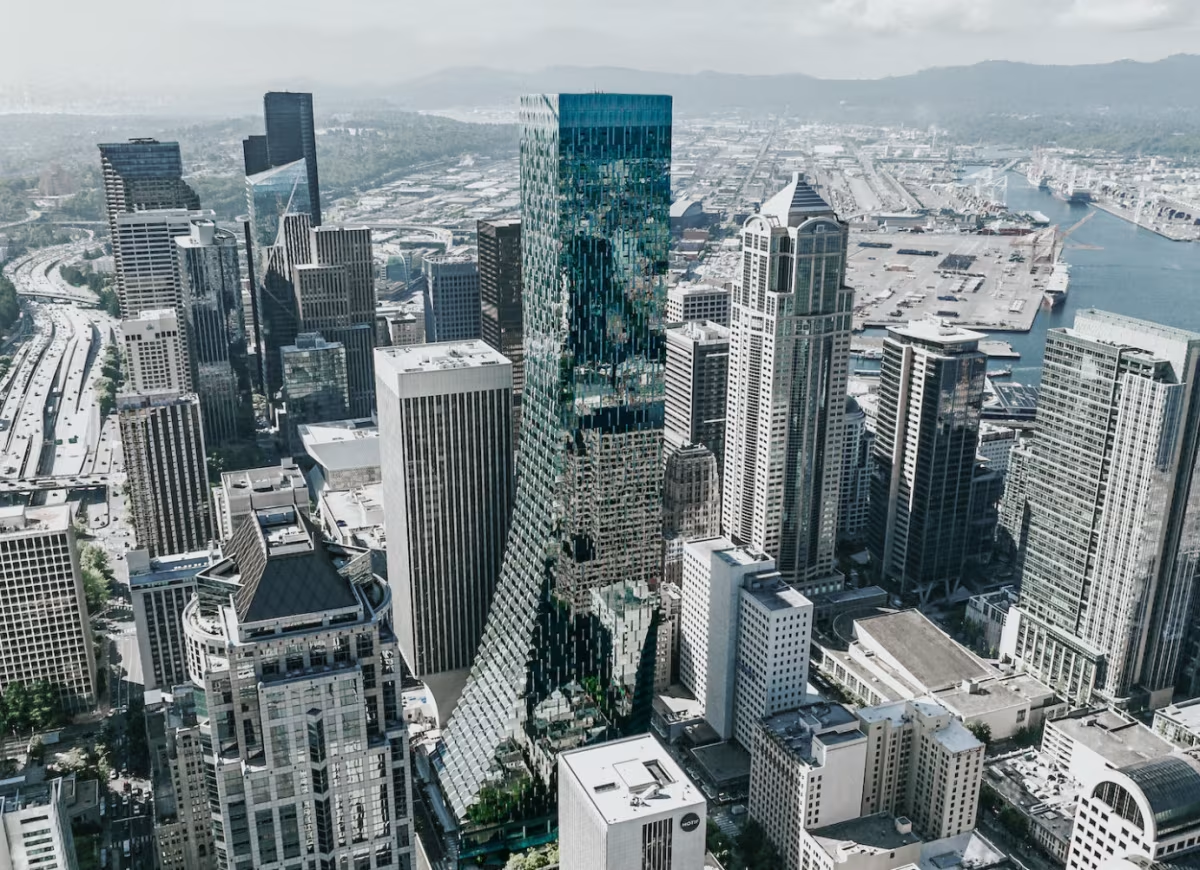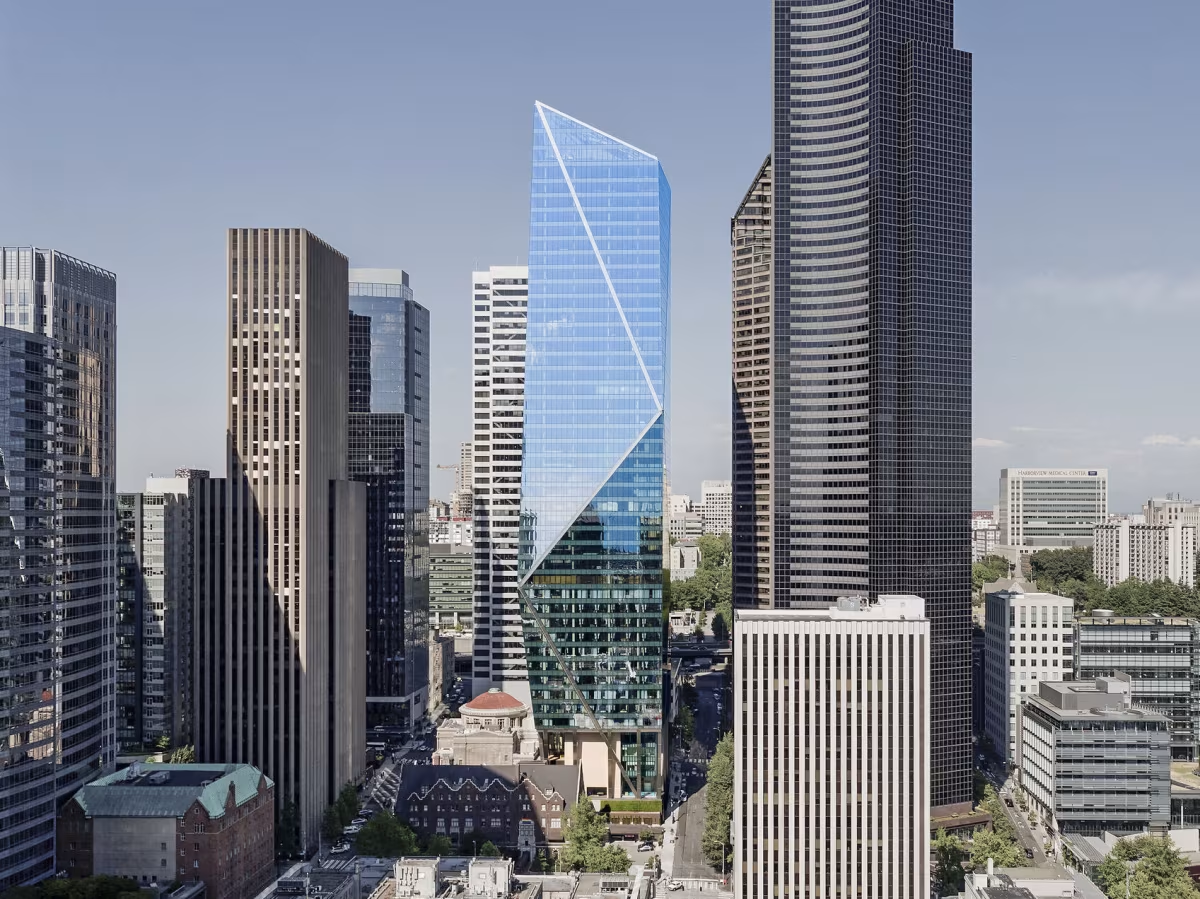Rainier Square Tower vs F5 Tower


Comparing the Rainier Square Tower and the F5 Tower is interesting because they both stand in Seattle, WA, and were completed within 3 years of each other, but they were designed by different architects.
This offers a unique glimpse at how rival designers approached projects in the same city during the same era.
Height & Size
The Rainier Square Tower is clearly the larger tower of the two, both in terms of height and number of floors. It rises to 846ft (258m) with 58 floors above ground, while the F5 Tower reaches 656ft (200m) with 44 floors above ground.
Rainier Square Tower also offers more total built-up area, a total fo 1,099,998,935 sqf (102,193,344m2), which is about 1,098,998,937 sqf (102,100,441m2) more than what the F5 Tower offers.
Of course, each project may have faced different briefs or regulatory constraints, which we don't really know about and could also explain the outcome.
Architectural Style
Both the Rainier Square Tower and the F5 Tower were designed in line with the aesthetic conventions of the Contemporary style.
At the time, this style was at the height of its popularity. So both NBBJ and Zimmer Gunsul Frasca followed what was in many ways expected of them, producing designs that fit comfortably within contemporary architectural norms, rather than breaking with convention.
Uses
Both towers follow a mixed-use program. The Rainier Square Tower combines commercial, residential and retail, while the F5 Tower integrates commercial and hotel. Notably, both include commercial as part of their program.
The F5 Tower incorporates a 5-star hotel with 189 rooms. More information is available at the official website.
The Rainier Square Tower offers 189 residential units.
Both towers provide significant parking capacity, with Rainier Square Tower offering 1000 spaces and the F5 Tower offering 291.
Structure & Facade
The two towers rely on different structural systems, reflecting distinct engineering strategies.
The Rainier Square Tower uses a Framed Tube In Tube structural system, which combines a strong central core with a perimeter tube of columns, while the F5 Tower uses a Trussed Tube In Tube system, that combines a central core with a perimeter tube reinforced by diagonal bracing.
Yet, when it comes to their facade, they both employed the same solution, a Curtain Wall facade.
A curtain wall is a non-load-bearing facade hung from the structural frame. It is anchored to floor slabs and transfers only its own weight and wind loads, allowing for sleek, glassy exteriors.
| Rainier Square Tower | F5 Tower | |
|---|---|---|
| NBBJ | Architect | Zimmer Gunsul Frasca |
| 2006 | Design Started | 2007 |
| 2014 | Design Ended | 2008 |
| 2017 | Construction Started | 2014 |
| 2020 | Year Completed | 2017 |
| Contemporary | Architectural Style | Contemporary |
| Mixed | Current Use | Mixed |
| 58 | Floors Above Ground | 44 |
| 7 | Floors Below Ground | 9 |
| 243 | Last Floor Height | 177 |
| 258 m | Height (m) | 200 m |
| 102193344 | Built-up Area (m²) | 92903 |
| Framed Tube In Tube | Structure Type | Trussed Tube In Tube |
| A Concrete Core And Steel | Vertical Structure Material | Steel |
| Poured Concrete Over Metal Decking | Horizontal Structure Material | Poured Concrete Over Metal Decking |
| No | Facade Structural? | No |
| Aluminum, Glass | Main Facade Material | Glass, Steel |
| Lease Crutcher Lewis | Main Contractor | JTM Construction |
| Wright Runstad | Developer | Daniels Real Estate |
| Otis Elevator Company | Elevator Company | Kone |
| Magnusson Klemencic Associates | Structural Engineer | Coughlin Porter Lundeen |
| NBBJ | Interior Designer | Philippe Starck |
| WA | State | WA |
| Seattle | City | Seattle |
| 401 Union St | Address | 801 5th Avenue |